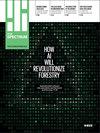核电池不可思议的复兴:初创公司计划将其用于机器人、传感器和医疗植入物
IF 2.4
4区 工程技术
Q2 ENGINEERING, ELECTRICAL & ELECTRONIC
引用次数: 0
摘要
1970年,巴黎的外科医生植入了第一个核动力起搏器,在接下来的五年里,至少有1400人接受了这种装置,主要在法国和美国。这些设备的电池包裹在钛中,含有一种放射性同位素(通常约为十分之一克钚-238),可以在不需要维护的情况下运行数十年。这项发明减轻了以前每隔几年就需要手术更换心脏起搏器化学电池的人群的负担。本文章由计算机程序翻译,如有差异,请以英文原文为准。
The Unlikely Revival of Nuclear Batteries: Startups Plan to Put them in Robots, Sensors, and Medical Implants
In 1970, surgeons in paris implanted the first nuclear-powered pacemaker, and over the next five years, at least 1,400 additional people received the devices, mostly in France and the United States. Encased in titanium, the batteries for these devices contained a radioactive isotope—typically about a tenth of a gram of plutonium-238—and could operate for decades without maintenance. The invention provided relief to a population of people who previously needed surgery every few years to change out their pacemaker's chemical battery.
求助全文
通过发布文献求助,成功后即可免费获取论文全文。
去求助
来源期刊

IEEE Spectrum
工程技术-工程:电子与电气
CiteScore
2.50
自引率
0.00%
发文量
254
审稿时长
4-8 weeks
期刊介绍:
IEEE Spectrum Magazine, the flagship publication of the IEEE, explores the development, applications and implications of new technologies. It anticipates trends in engineering, science, and technology, and provides a forum for understanding, discussion and leadership in these areas.
IEEE Spectrum is the world''s leading engineering and scientific magazine. Read by over 300,000 engineers worldwide, Spectrum provides international coverage of all technical issues and advances in computers, communications, and electronics. Written in clear, concise language for the non-specialist, Spectrum''s high editorial standards and worldwide resources ensure technical accuracy and state-of-the-art relevance.
 求助内容:
求助内容: 应助结果提醒方式:
应助结果提醒方式:


